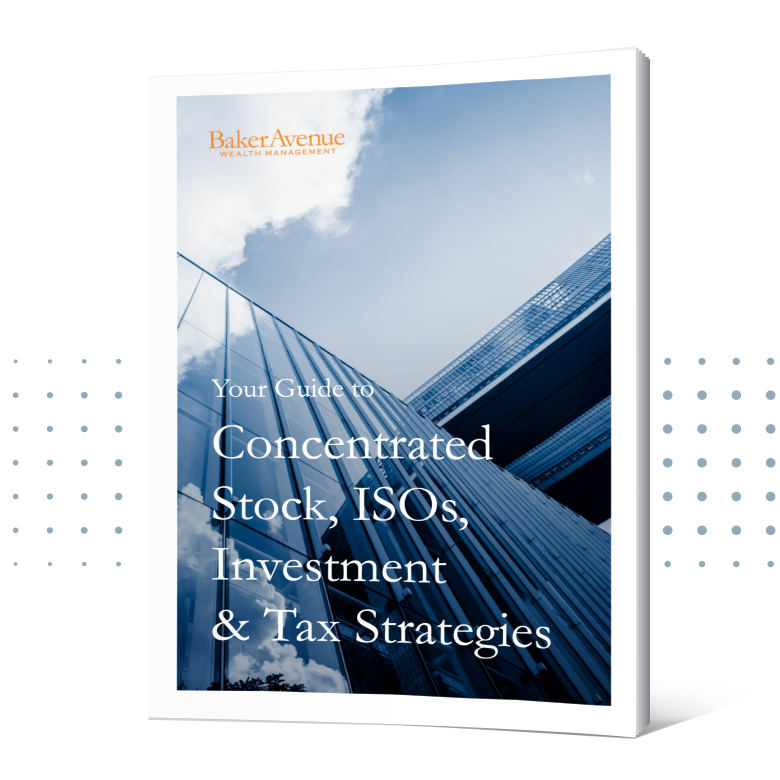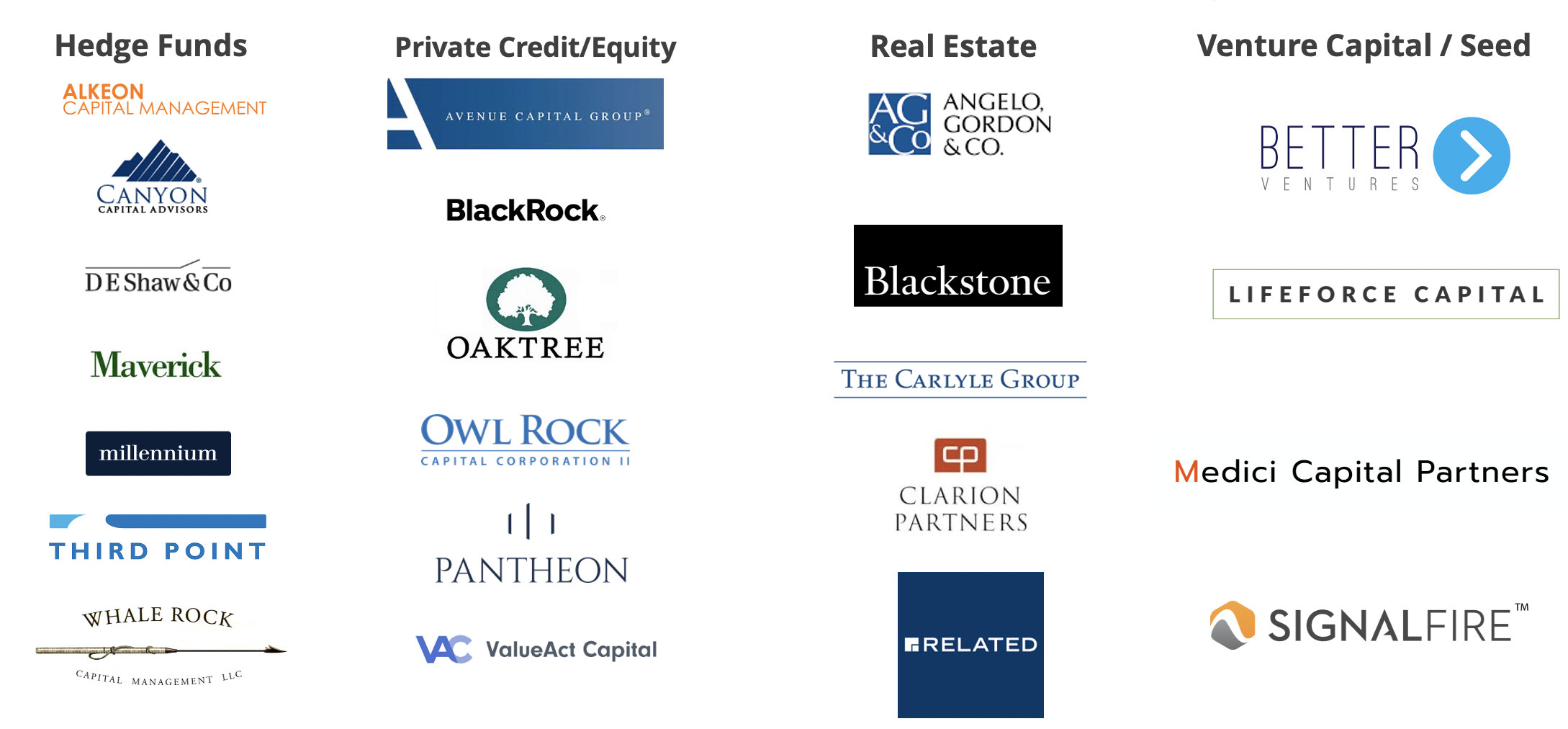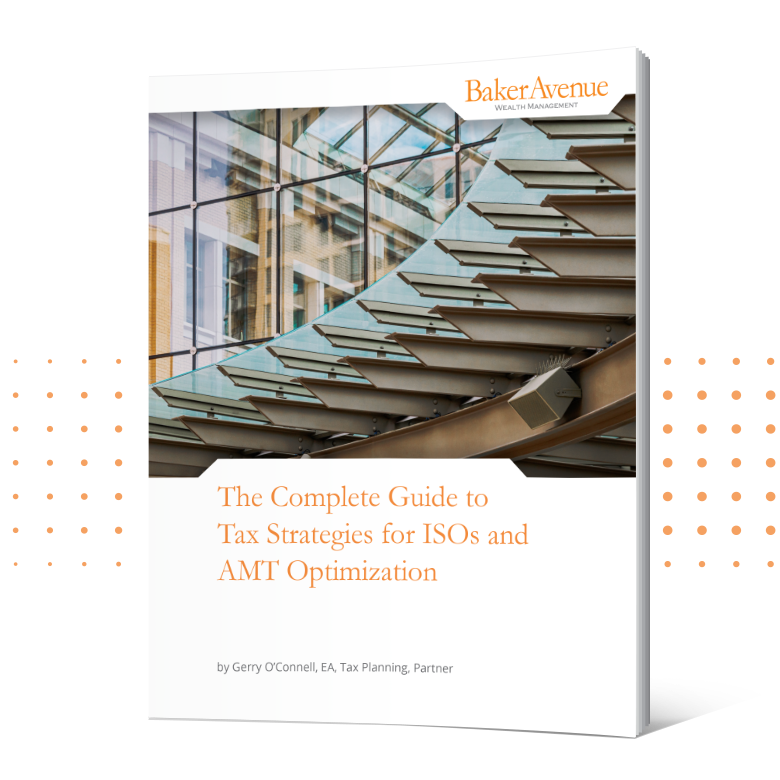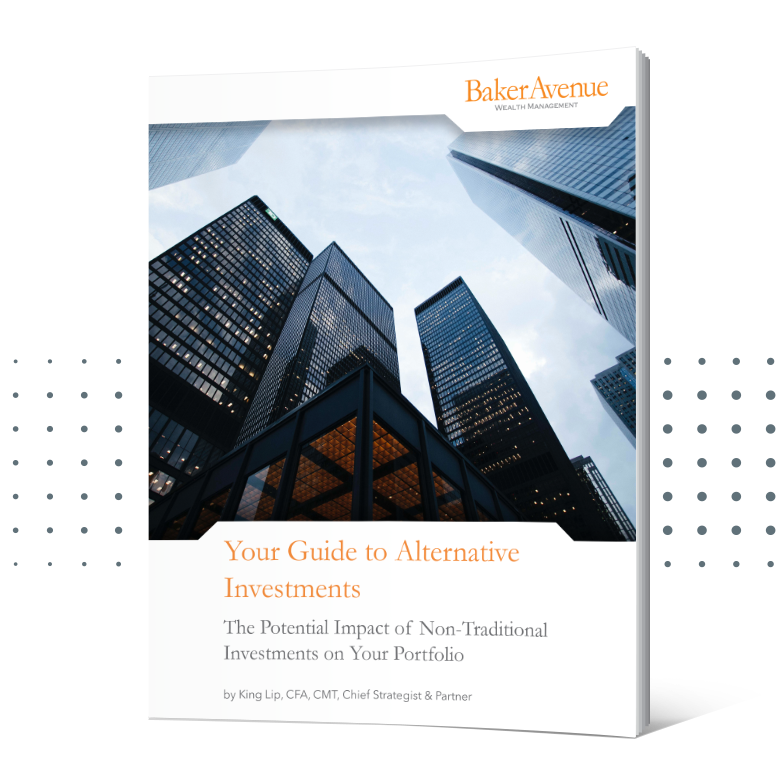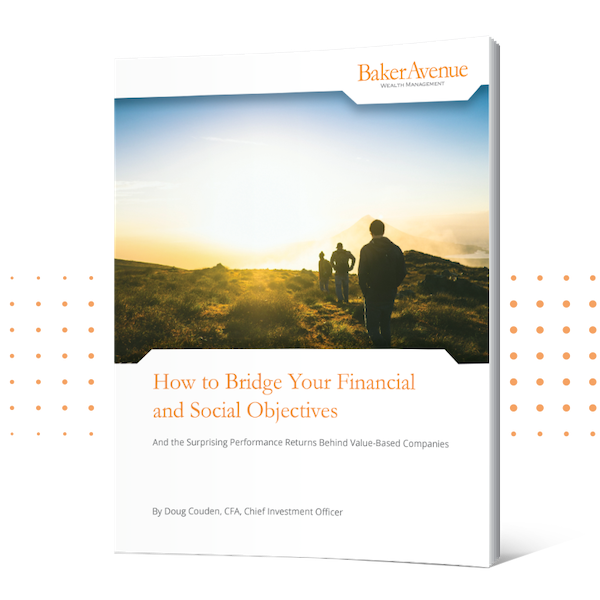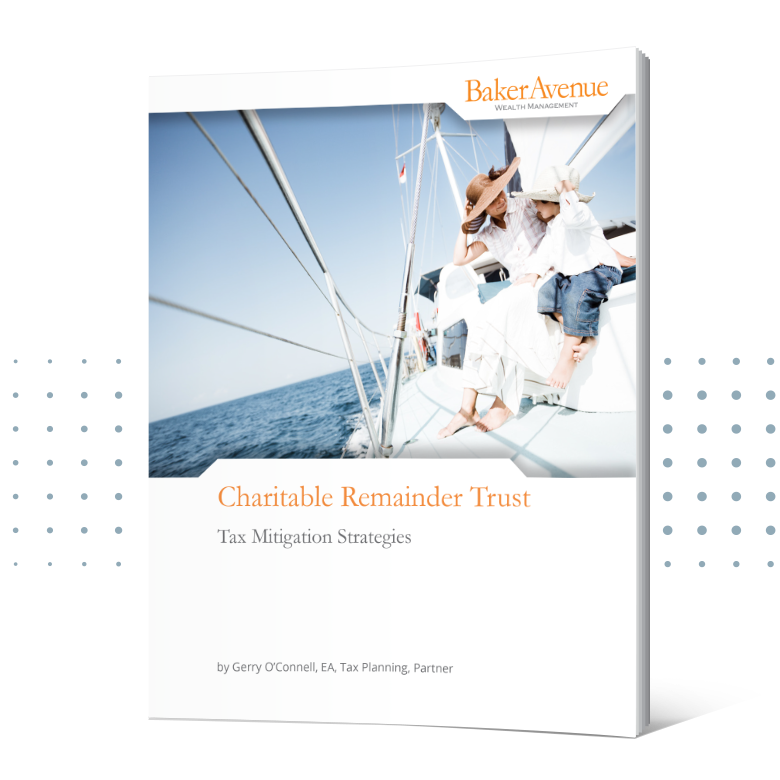Have questions?
When should I exercise my options? How do I hedge to protect the value of my shares? What options do I have to reduce my tax exposure? How do I obtain funds to exercise my options? At what price point should I sell my shares?Contact BakerAvenue to discuss your executive compensation, diversification and tax reduction strategies. We offer deep expertise in concentrated stock positions or highly appreciated assets, Incentive Stock Options (ISOs) and Alternative Minimum Tax (AMT), Alternative Investments, or helping you to prepare for when your company is pre- or post- IPO.

How Much AMT Does Exercising Your ISO Create?
If you exercise Incentive Stock Options (ISOs), you may be subject to Alternative Minimum Tax (AMT). AMT is a parallel tax system imposed on an alternative, more comprehensive measure of income, which includes the unrealized gains of ISO value and fewer opportunities for deductions. If the calculated AMT exceeds the ordinary income tax, then the AMT amount is used.
Results are based on basic calculations. To discuss your specific situation, schedule a consultation with a BakerAvenue Tax Expert.
Given your input, here’s an AMT estimate for 2020.
FOR ILLUSTRATION PURPOSES ONLY AND SHOULD NOT BE CONSIDERED TAX OR LEGAL ADVICE. Please note that this is an oversimplified estimate that focuses exclusively on ISOs and their impact on AMT. AMT is one of the most complex and least-understood areas of the tax code, the AMT was enacted in 1969 to prevent higher-income earners from paying too little tax because they were able to take a variety of deductions or exclusions. Schedule a consultation with a BakerAvenue Tax Expert to get a full analysis of your specific situation.
- When should I exercise my options?
- What is my tax exposure if I exercise ISOs versus NSOs?
- Should I sell my shares during my open window? And if so, how much should I sell?
- How do I hedge the downside on my shares?
- How do I best reduce my tax exposure?
- How do I obtain funds to exercise my options?
- At what price point should I sell my shares?
- What is a fixed-income replacement?

How Do You Maximize the Value of Your Concentrated Stock Position?
Owning a large stock position can create investment and planning challenges. In this guide, we provide a variety of strategies to maximize the value of your concentrated stock position and incentive stock options (ISOs), and reduce your tax exposure.
Concentrate to Build Wealth.
Diversify to Preserve Wealth.
- Strive to reduce volatility inherent with a single-stock concentration.
- Encompass solutions for strategic diversification, hedging, income generation and minimize taxes.
- Maximize the divestment value using in-depth fundamental and technical analysis.
- Work towards generating cash flow income with the sale of stock or index options.
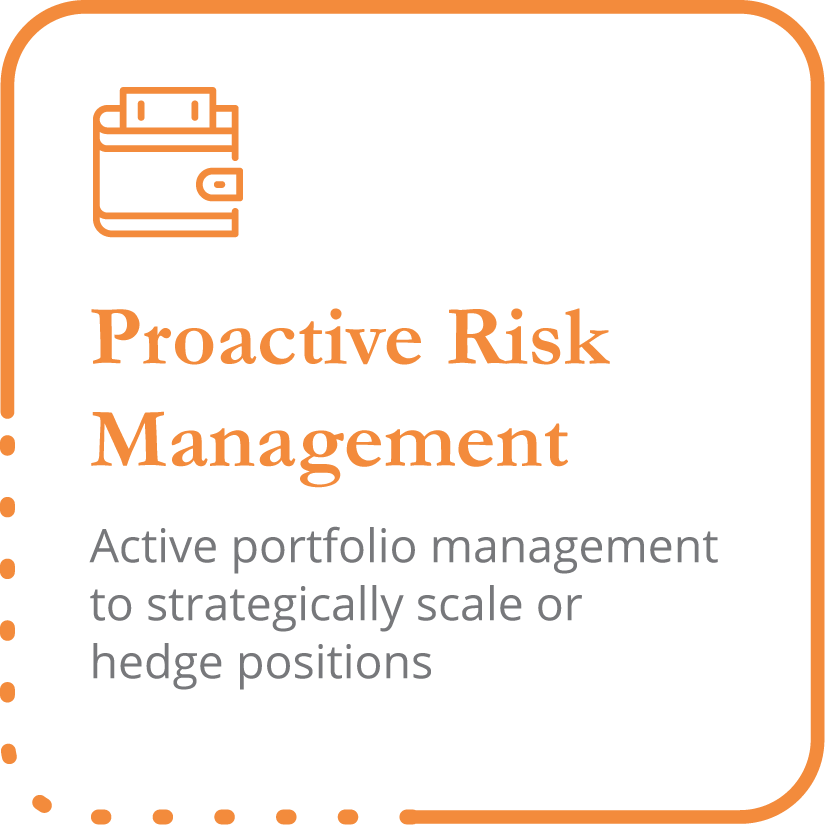
- Strive to add value with comprehensive competency on a single-stock concentration
- In-depth technical, macro, fundamental analysis of stock, company and market
- Monitor business and developments: earnings updates, competitive landscape
- Recommend actions to optimize concentrated stock position

Current / Phase I
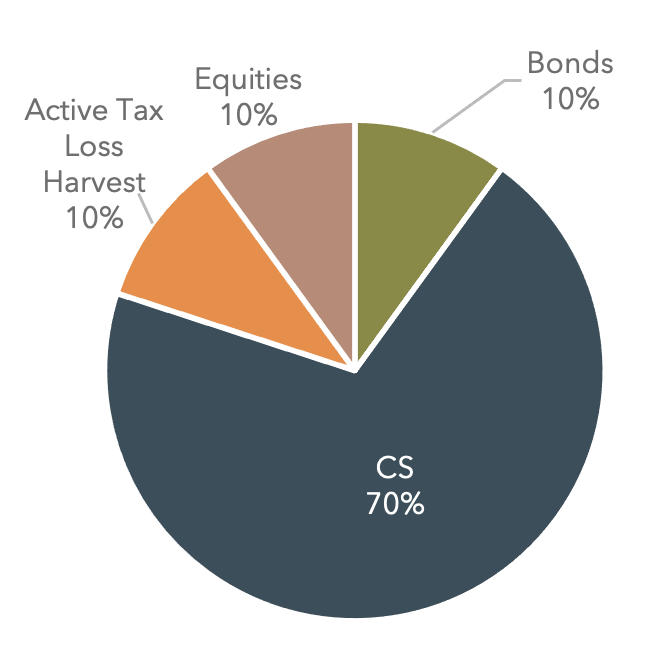
Phase II
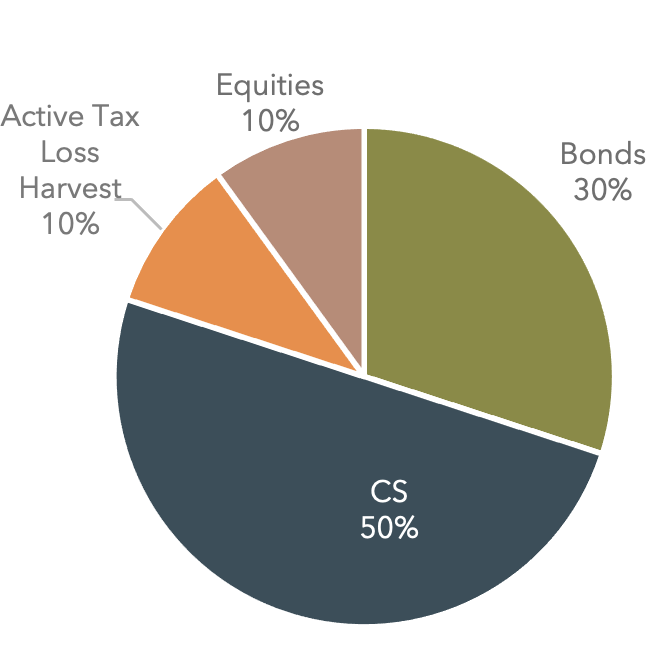
Phase III
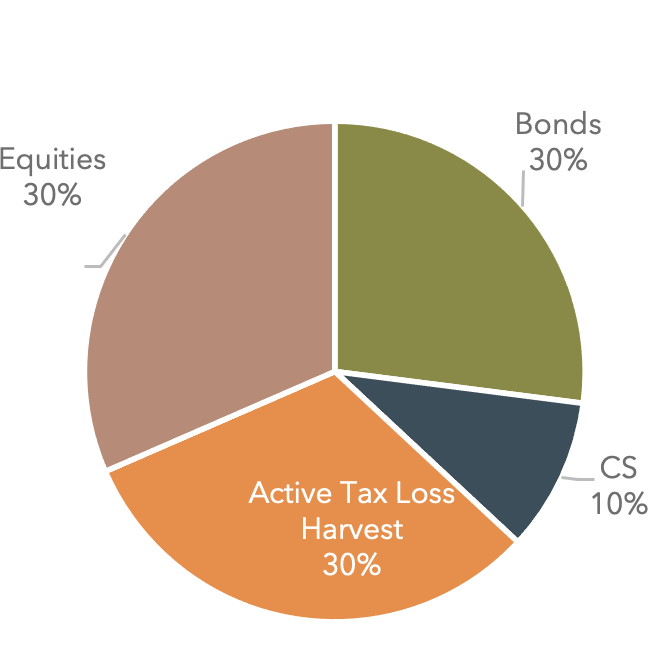
Long Term
Meeting our clients' objectives through diversification strategies
"I'd like to retire" The client wanted to diversify her concentrated stock to preserve her wealth and diversify. After some profit-taking, she diversified into a balanced growth portfolio so can have a work-optional lifestyle on her way to retirement.

"I want to travel around the world ..." he plans to retire in a few years and travel the world and wants to receive income from his investments. The client wanted to diversify and preserve his wealth after IPO, and we helped him reduce his tax exposure and generate income.

“I want to buy a farm and spend my time in Asia" The client wanted to diversify to preserve her wealth while creating a work-optional lifestyle. We helped her optimize her position and reduce her taxes. She and her husband plan to buy a large farm to retire on and establish a will and trust for their children.

The images above represent client profiles, they are not the actual clients.
Options to Reduce Your Tax Liability
- Establish a Charitable Remainder Trust (CRT)
- Establish a Donor Advised Fund (DAF)
- Actively-tax loss harvest
- Fund retirement accounts
- Sell bond investments
- Invest in a Qualified Opportunity Zone (QOZ)
- Pay capital gains taxes with a margin loan
Complexity Spectrum
Strategy Overviews
Active Tax-Loss Harvesting
- Funds are used to actively harvest losses while mimicking the returns of a selected market index.
Charitable Remainder Trust (CRT)
- Investor contributes highly appreciated securities into a CRT and receives an annuity income stream.
Exchange Fund
- Investor contributes concentrated stock with low basis into a partnership to receive a basket of diversified securities after 7 years.
Opportunity Zones (QOZ)
- Investor contributes capital gain into a QOZ to defer original capital gains tax.
Variable Prepaid Forward Contract
- Investor receives cash upfront on 75-85% of position generated by a loan. The stock is collared with a floor and ceiling price.
Donor Advised Fund (DAF)
- Investor contributes highly appreciated stock into a DAF and receives an upfront tax deduction. Investor can take time to make charitable contributions.

What is Active Tax-Loss Harvesting?
- Systematically selling a security that has experienced a loss
- “Harvested” losses can offset capital gains and some income
- The sold security is replaced by a similar one, maintaining similar exposure and risk characteristics of a portfolio strategy, like the S&P 500 index
- Due to IRS “wash sale” rules, the sold security cannot be bought back for 30 days
Examples of similar securities
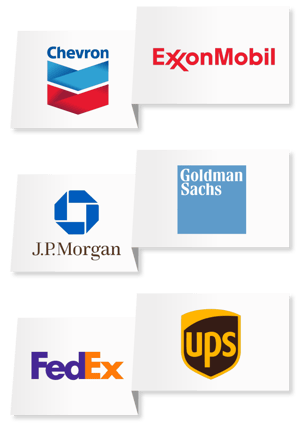

Fixed Income Replacements
Fixed income can offer a steady stream of income with less risk than stocks. While government and corporate bonds have historically been the most common types of fixed-income products, the recent inversion of the yield curve has caused investors to wonder what other reliable fixed income replacements exist.Click to Download and Get More Insights
Accredited Investor
A person who has an individual net worth, or joint net worth with the person’s spouse, exceeding $1 million at the time of purchase (excluding the value of the primary residence); or a person with income exceeding $200,000 in each of the two most recent years or joint income with a spouse exceeding $300,000 for those years, and a reasonable expectation of the same income level in the current year.
Source: SEC
Ask
This is the lowest price an owner is willing to accept for an asset.
Asset
Something that has the potential to earn money for you. It is something you own that can reasonably be expected to produce something for you. Assets include stocks, bonds, commodities, real estate, and other investments.
Asset Allocation
One of the ways to divide up the holdings in your portfolio is to do so by asset class. The idea is that different assets perform opposite to each other, and you can limit some of your risks by allocating, or diversifying, your portfolio according to the type of asset you have.
Balance Sheet
A statement showing a company's profit margin, what a company owns, the liabilities the company has, as well as stating the outstanding shareholder equity.
Bear Market
This is a market that is falling. A bear market has a downward trend, and someone who believes the market is headed for a drop is often referred to as a “bear.” Bear markets can last for a few weeks or years.
Bid
This is the highest price a buyer is willing to pay when buying an investment. Today, electronic trading makes it possible to ask and bid to be matched up automatically and almost instantly.
Blue Chip
Blue chips are companies that have a long history of good earnings, good balance sheets, and even regularly increasing dividends. These are solid companies that are likely to provide reasonable returns over time.
Bond
This is an investment that represents what an entity owes you. Essentially, you lend money to a government or a company, and you are promised that the principal will be returned plus interest.
Book Value
If you take all the liabilities a company has, and subtract them from the assets and common stock equity of the company, what you would have left over is the book value. Most of the time, the book value is used as part of an evaluative measure rather than being truly related to a company's market value.
Broker
This is the entity that buys and sells investments on your behalf. Usually, you pay a fee for this service. In the case of an online discount broker, you often pay a flat commission per trade. Other brokers, especially if they also manage your assets as a whole, just charge a percentage of your assets each year.
Brokerage Account
A brokerage account is created by a licensed brokerage firm that allows an investor to add funds and then the investor can place investment orders. The investor owns the assets contained in the brokerage account but will usually have to claim any taxable income from capital gains.
Bull Market
This is a market that is trending higher, likely to gain. If you think that the market is going to go up, you are considered a “bull.” Additionally, the term, like bear, can be applied to how you feel about an individual investment. If you are “bullish” on a specific company, it means you think the stock price will rise.
Capital Gain or Loss
This is the difference between what you bought an investment for and what you sell if for. If you buy 100 shares of a stock at $10 a share (spending $1,000) and sell your shares later for $25 a share ($2,500), you have a capital gain of $1,500. A loss occurs when you sell for less than you paid. So, if you sell this stock for $5 instead ($500), you have a capital loss of $500.
Derivative
A derivative is an asset that derives, or gains, its value from another source.
Diversity
A portfolio characteristic that ensures you have more than one type of asset. It also means choosing to buy investments in different sectors, industries, or geographic locations.
Dividend
In some cases, a company will offer to divide up some of its income among shareholders. Dividends can be paid once, as a special use of them, or they can be paid more regularly, such as monthly, quarterly, semi-annually, or annually.
Dividend Yield
The dividend yield is the current yield of a common stock at its present dividend rate. It is the ratio between the dollar value of the dividend a company pays and its share price. If a stock is trading at $100 per share and pays out $5 in annual dividends, the dividend yield would be 5%.
Dollar Cost Averaging
An investment strategy in which an investor divides up the total amount to be invested across periodic purchases of a target asset (often a stock) in an effort to reduce the impact of price changes on the overall purchase. The purchases occur regardless of the asset's price and at regular intervals. This aims to avoid making the mistake of making one lump-sum investment that is poorly timed with regard to asset pricing.
Dow Jones Industrial Average
A stock market index that tracks 30 large, publicly owned, blue-chip companies trading on the New York Stock Exchange and the NASDAQ. It was designed to serve as a proxy for the health of the broader U.S. economy.
Exchange
This is a place where investments, including stocks, bonds, commodities, and other assets, are bought and sold. It's a place where brokers (buyers and sellers) and others can connect. While many exchanges of “trading floors,” most orders these days are executed electronically.
ETF (Exchange-Traded Funds)
A type of investment fund that trades like a stock. Investors buy and sell ETFs on the same exchanges as shares of stock. ETFs allow investors to track any number of things, such as indexes, commodities, sectors, or even stocks. Stock exchange-traded funds allow investors to gain exposure to a basket of equities in a specific sector or index without purchasing individual stocks.
Form 10-K
Form 10-K is an annual disclosure document certain firms are required to file with the Securities and Exchange Commission. It contains in-depth information about a business, including its finances, business model, and much more.
Hedge Fund
This is an alternative investment that uses pooled funds. A money manager or registered investment advisor sets up this type of structure as an LLC or a limited partnership. The manager raises money from outside investors and then invests and manages that money. Hedge funds are aimed at high-income investors because individuals must earn at least $200,000 annually to be considered an accredited investor and eligible to invest with a hedge fund.
High-Water Mark
The existence of the high-water mark ensures that a fund only takes performance-related fees on new profits. For example, assume a $1,000,000 investment is made and that the fund declines by 20% in year 1, leaving $800,000 in the fund. In year 2, the fund returns 25%, bringing the investment value back to $1,000,000. If the fund employs a high-water mark, it will not take incentive fees on the return in year 2 since the investment has never really grown (i.e., the fund did not make any new profits). The fund will only take incentive feed if the investment grows above the level of $1,000,000.
Hurdle Rate
The rate at which a hedge is allowed to collect performance fees. If a hedge fund sets a 5% hurdle rate, for example, it will only collect incentive fees during periods when returns are higher than this amount.
Index
A tool used to statistically measure the progress of a group of stocks that share characteristics. This can include a group of stocks, a group of bonds, or a group of other assets.
Index Fund
An index fund is a type of mutual fund that allows an individual to buy investments that mimic the trends of an index. These are generally more passive investments with lower fees than mutual funds.
IRA
This stands for individual retirement account. It is a tax-advantaged account. There are several types of IRAs. Anyone over 18 with a job can open an IRA for themselves. However, not everyone will have access to every type of IRA.
Liquidity
The ease with which an investment product / fund can be sold / redeemed from, without impacting its price. Hedge funds typically offer quarterly or annual liquidity, meaning that they allow investors to redeem their shares that often.rure dolor in reprehenderit in voluptate velit esse cillum dolore eu fugiat nulla pariatur.
Margin
This is essentially borrowed money used to make an investment. You can get credit from a broker to buy more than you have actually money for. The hope is that you will make enough money that you will be able to repay the borrowed amount from your earnings.
Market Capitalization
The market cap of a company is figured by multiplying its current share price by the number of shares outstanding. The largest companies have market caps in the billions.
Money Market
A money market account is an interest-bearing account that will usually pay a higher interest rate than a bank savings account would.
Mutual Fund
A mutual fund is managed by a professional portfolio manager that purchases securities with money pooled from individual investors. The fund can hold individual stocks or bonds. Such funds typically come with higher fees than other investments since the account is actively managed.
NASDAQ
The National Association of Securities Dealers Automated Quotations is a U.S. exchange for buying and selling securities. It is based in New York City. Nasdaq is also an index of the stocks bought and sold on the Nasdaq exchange.
New York Stock Exchange
One of the most famous stock exchanges is the NYSE, which trades stocks in companies all over the United States and even includes stocks of some international companies.
Offshore Funds
Vehicles structured for foundation or tax-deferred assets to avoid UBIT (Unrelated Business Income Tax).
Onshore Funds
Vehicles structured for taxable assets.
Performance Fee
A fee paid to a fund manager for providing returns on an investment, often by reference to a benchmark or hurdle rate. This fee is based on a percentage of net new profits and is earned by the hedge fund manager for the period concerned. It may be paid annually or quarterly, but accrues monthly in the fund valuation. (Typically 20% of the fund's profits, 50% for high-performing funds.)
Personal Investment Strategy
This is exactly what it sounds like: your personal approach to investments and strategy. There's no single right way to invest. Learn about how investing works. Then define and execute your personal strategy.
P/E Ratio
This measure reflects how much you pay for each dollar that the company earns. A company often reports profits on a per-share basis. So a company might say that it has earned $5 per share. If that same stock is selling for $75 a share on the market, you divide $75 by $5 to come up with a P/E ratio of 15. The higher a P/E ratio is, the more there are expectations for higher earnings.
PEG Ratio
The price-to-earnings-to-growth (PEG) ratio is a modified form of the PE ratio that factors growth into the metric. For instance, the ratio shows that a company growing at 15% per annum and trading at 20x earnings can be cheaper than a company trading at 8x earnings and shrinking by 10% per annum.
Qualified Purchaser
To be considered a "qualified purchaser," at least one of the following criteria must be met:
- The purchaser is an individual or family owned business that owns $5 million or more in investments. If the purchaser is a family owned business, it cannot be formed solely for the purpose of investing in the fund.
- The purchaser is a trust sponsored and managed by qualified purchasers, which wasn't formed for the sole purpose of investing in the fund.
- The purchaser is an individual or other entity that invests at least $25 million, either for their own accounts or on others' behalf. Like the other criteria, entities cannot have been formed for the specific purpose of investing in the fund. Examples in this category would be a professional investment manager or a corporation.
- Any entity, if all owners are qualified purchasers.
Source: Motley Fool
Recession
A recession is defined as two consecutive quarters when a country sees negative economic activity. Usually, this is determined by a decline in GDP (gross domestic product) for two consecutive quarters.
Redemption
Liquidation of shares or interests in an investment fund.
Registered Investment Advisor (RIA)
A financial investment advisor who has been through certain training and who agrees to abide by certain rules, including ensuring that recommendations and trades made on your behalf are in your best interest.
Rollover IRA
When an employee leaves his or her employer, he or she can opt to roll over their 401(k) balance and have it deposited into a Rollover IRA, which basically is exactly like the Traditional IRA.
Roth IRA
An individual retirement account allowing a person to set aside after-tax income. Similar to the Traditional IRA, you can contribute the maximum of $5,500 to a Roth IRA ($6,500 if you are age 50 or older by the end of the year). The difference is you are not taxed when you take your retirement payments. However, there are limitations pending your salary.
S&P 500
The Standard & Poor's 500 is a stock market index that tracks the value of 500 large-cap companies in the United States. Similarly, the Dow Jones a stock market index that tracks 30 of the largest American companies.
Simple IRA
A type of IRA for small business owners with fewer than 100 employees who want to offer some sort of retirement benefits to their employees, but don’t want to deal with larger challenges that come with a 401(k) company.
Stock
A stock represents ownership in a company. Companies divide their ownership stakes into shares, and the amount of shares you purchase indicates your level of ownership in the company. Stock is bought in the hopes that the company will be successful, and more people will want a stake, so you can sell your stake later at a higher price than you paid.
SEP-IRA
This form of IRA can be used by self-employed people and small business owners under certain circumstances. The contribution limits are much higher than a Traditional IRA or Roth IRA.
Taxable Accounts
Account you can use for trading stocks, bonds, mutual funds, etc. Taxable accounts don't carry any tax advantages, so you'll be taxed on your investment income.
Tax-Advantaged Accounts
These types of investment accounts come with tax advantages of some type that let you defer or be exempt from taxes on investment income. Retirement accounts — where you can deduct contributions from your taxes, such as an individual retirement account (IRA) — fall into this category.
Volatility
This is when there are big swings in either direction of the stock market or individual stocks. If the stock market rises and falls more than 1% over a consistent period of time, it would probably be considered a ‘volatile’ market.
Volume
Volume is the number of shares being traded in the entire market during a given period of time. Each transaction during stock trading hours contributes to the count of total volume.
Yield
This is associated with dividend investing. Your yield represents the ratio between the stock price paid and the dividend paid. If a stock is trading at $100 per share, with a dividend that amounts to $5 per year, you divide the $5 by $100 and turn it into a percentage. In this case, the yield would be 5%.
403(b)
A retirement plan that is pretty much like a 401(k) but is only offered for non-profit organizations.
529 Plan
This tax-advantaged plan is designed to save for future education costs. This can be for K-12 tuition or for future college costs.
